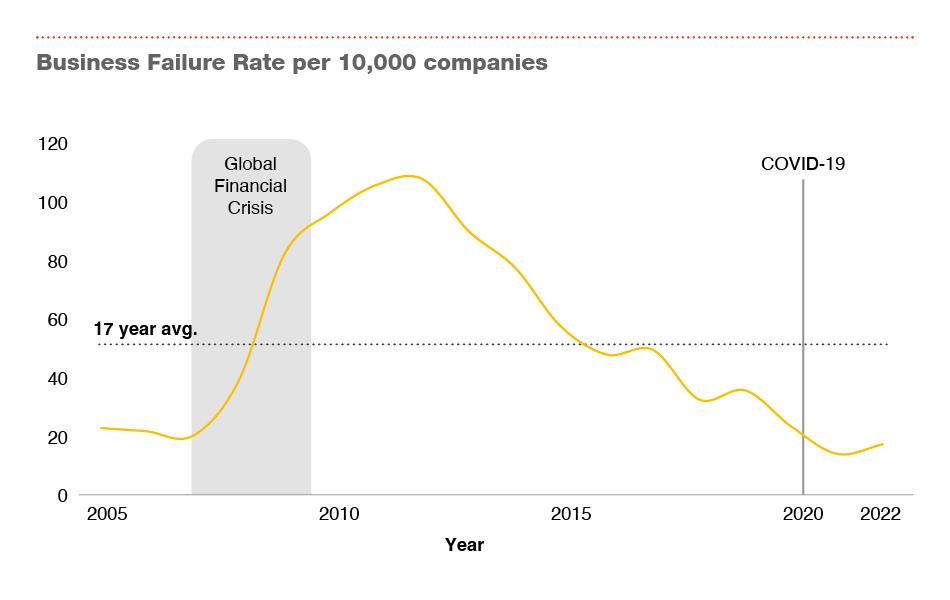
While many businesses survived the COVID-19 pandemic, business failures are beginning to increase slightly. Irish businesses now face several challenges including:
- high inflation
- increasing interest rates
- higher energy costs
- supply chain constraints
With increased inflation and energy costs set to be followed by rising interest rates, we expect to see a greater level of restructuring activity in the final quarter of 2022 and into 2023.
Direct economic impact
The direct economic impact from business failures in the year to date is €1.6 billion.
Q3 business failure insights
The business failure rate per 10,000 companies increased by 31% from Q2 2022 to Q3 2022.

PwC Insolvency Barometer
The annual failure rate is running at 17% of the peak in 2012.

Q3 industry and county insights
The arts, entertainment and recreation and hospitality sectors recorded the highest rate of business failure in Q3 2022.
Dublin had the highest rate of business failures in Q3 2022—its failure rate increased by 80% from Q2 2022.
Ireland's liquidation rate versus the UK
UK liquidations are at record levels and higher than those recorded during the global financial crisis.

Key actions to take now
Assess your working capital
Companies must reappraise and shore up their liquidity and working capital requirements to address the unwinding of government support and debts accrued during the pandemic, while meeting renewed customer demand and delivering delayed investment.
Identify multiple funding sources
The limited availability of further government support will increase reliance on existing lenders, shareholders and access to the capital markets, which may be less forthcoming in sectors where the prospects for recovery and long-term growth are less clear.
Monitor your cash flow
In this uncertain and potentially stop-start pathway to recovery and economic growth, it is essential to monitor cash flow. Companies must develop realistic forecasts that take account of potential varying recovery scenarios and, in particular, increasing rates of inflation in Ireland and around the world.
Consider the future
The immediate demands don't just include day-to-day expenses, but also funding for future growth and adapting to the trends reshaping marketplaces and economies.
We are here to help you
The months and years ahead will undoubtedly be challenging for many Irish businesses, but we are ready to help you. Contact us today.







